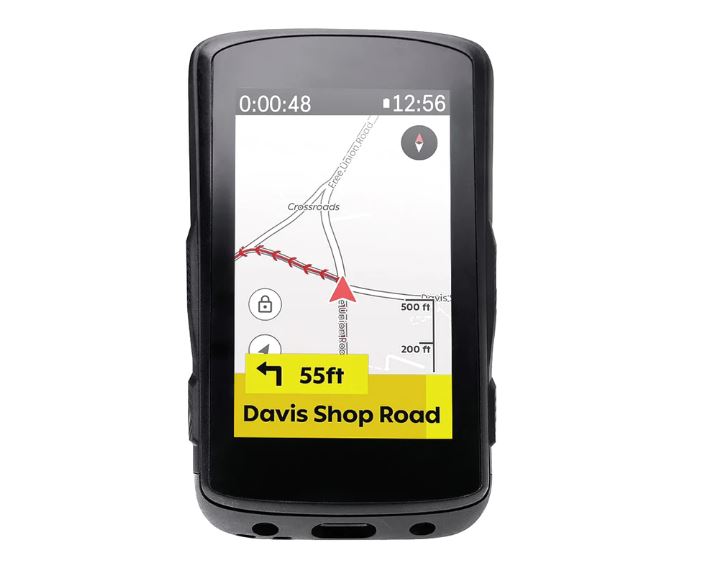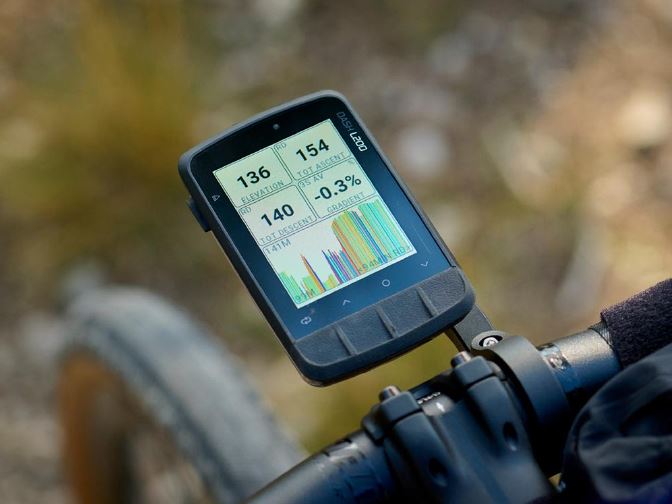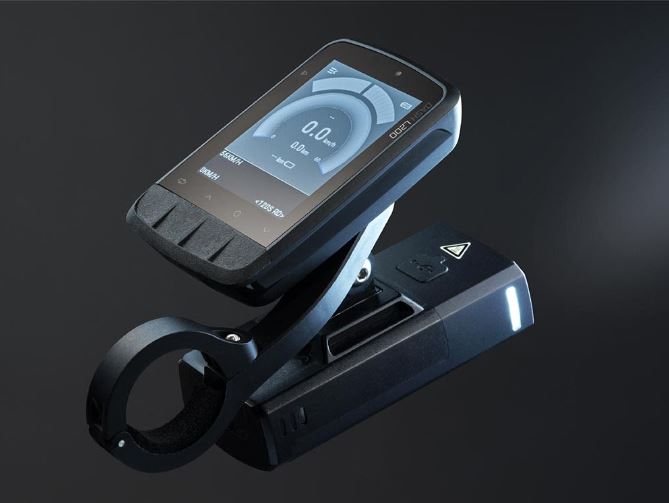Bike Computer Buyers Guide

A bike computer is a valuable tool for cyclists of all levels, offering essential features to enhance your riding experience. Whether you’re a casual rider or a dedicated athlete, a bike computer can help you monitor your performance, navigate routes, and stay connected. In this comprehensive Bike Computer Buyers Guide, we’ll delve into the key factors to consider when choosing the perfect bike computer to meet your cycling needs.
Why Invest in a Bike Computer?
Bike computers offer a range of benefits for cyclists:
Data Monitoring: Bike computers track crucial data such as speed, distance, time, heart rate, cadence, and power (with compatible sensors or power meters). This information empowers you to analyze your rides and make data-driven decisions to improve your cycling performance.
Navigation: Many bike computers come equipped with GPS functionality and preloaded maps, allowing you to plan and navigate your routes with ease. This is especially valuable for exploring new terrain or following specific training routes.
Connectivity: Bike computers can seamlessly sync with your smartphone or other devices via Bluetooth or ANT+ technology. This connectivity enables you to receive notifications, share your rides on social platforms, and analyze your data using dedicated apps.
Training Tools: Advanced bike computers offer a wide range of training features, including virtual training partners, interval timers, and customized workout screens. These tools help you set and achieve your fitness goals more effectively.
Choosing the Right Bike Computer
When selecting a bike computer, consider the following factors:
Type of Bike Computer:
- Basic Bike Computer: These entry-level devices provide fundamental data such as speed, distance, and time. They are user-friendly and budget-friendly, making them ideal for casual riders.
- GPS Bike Computer: If you desire GPS navigation, mapping, and advanced data tracking, GPS bike computers are a suitable choice. They cater to avid cyclists, commuters, and individuals seeking in-depth ride analysis.
- Cycling Computer with Advanced Metrics: Designed for serious cyclists and athletes, these advanced computers can connect to various sensors like heart rate monitors, cadence sensors, and power meters. They offer comprehensive performance data for those looking to maximize their training.
Display and Size:
- The size and type of display are important considerations. Larger screens are easier to read, especially while riding. Color displays are visually appealing but may consume more battery.
Battery Life:
- Evaluate the battery life based on your typical ride duration. Some bike computers offer longer-lasting batteries, while others may require more frequent charging.
GPS and Mapping:
- For those who require navigation capabilities, ensure the bike computer has GPS functionality and maps. Check for features like turn-by-turn directions and the ability to load custom routes.
Connectivity:
- Look for bike computers with Bluetooth and ANT+ connectivity, allowing you to pair with sensors, smartphones, and other devices. This connectivity facilitates data transfer, notifications, and integration with apps.
Sensors:
- Consider whether you currently use or plan to use sensors such as heart rate monitors, cadence sensors, or power meters. Ensure that the bike computer is compatible with these sensors for comprehensive data tracking.
User Interface:
- Check the user interface and ease of navigation.
- A user-friendly interface simplifies the process of accessing data and adjusting settings while riding.
Durability and Water Resistance:
- Ensure that the bike computer is built to withstand various weather conditions and offers water resistance to protect it from rain or sweat.
Price and Budget:
- Establish a budget based on your cycling requirements and the features you desire. Basic models are more affordable, while advanced computers with extensive capabilities may come at a higher cost.
Brand and Reviews:
- Consider reputable brands known for their product quality and customer support. Reading reviews and seeking recommendations from fellow cyclists can provide valuable insights.
Bike Computer Buyers Guide- Conclusion
A bike computer is a valuable tool that can significantly enhance your cycling experience, whether you’re riding for fitness, commuting, or competition. By selecting the right bike computer that aligns with your specific needs, budget, and preferences, you can monitor your performance, navigate routes with confidence, and enjoy a more connected and informed ride. Invest in a bike computer that complements your cycling goals, and use it to reach new heights in your cycling journey. John
Click to find the best bike computers rated and ranked
FAQ’s
Bike Computer Buyers Guide-How do I choose a bike computer?
Choosing the right bike computer involves considering your specific cycling needs, preferences, and budget. Here’s a step-by-step guide to help you make an informed decision:
Determine Your Cycling Goals:
- Begin by defining your cycling objectives. Are you riding for fitness, commuting, touring, or racing? Your goals will influence the type of bike computer you need.
Consider Essential Features:
- Identify the key features you require. These may include:
- Speed and Distance Tracking: Basic bike computers provide speed and distance data, which is suitable for most recreational riders.
- GPS and Mapping: If you need navigation capabilities, look for a bike computer with built-in GPS and mapping features.
- Heart Rate Monitoring: If you want to track your heart rate during rides, consider a bike computer that’s compatible with heart rate monitors.
- Cadence Measurement: For cyclists aiming to improve pedaling efficiency, choose a bike computer that supports cadence sensors.
- Power Measurement: Serious cyclists and athletes may require a bike computer compatible with power meters to monitor their wattage output.
Decide on Computer Type:
- Choose between different types of bike computers:
- Basic Bike Computer: Provides fundamental data like speed, distance, and time. Suitable for casual riders.
- GPS Bike Computer: Offers GPS navigation, mapping, and advanced data tracking. Ideal for avid cyclists, commuters, and those who want detailed ride analysis.
- Cycling Computer with Advanced Metrics: Designed for serious cyclists and athletes, these advanced computers can connect to various sensors for comprehensive performance data.
Display and Size:
- Consider the size and type of display. Larger screens are easier to read while riding. Color displays are visually appealing but may consume more battery.
Battery Life:
- Evaluate the battery life based on your typical ride duration. Some bike computers offer longer-lasting batteries, while others may require more frequent charging.
GPS and Mapping:
- If you require navigation capabilities, ensure the bike computer has GPS functionality and maps. Check for features like turn-by-turn directions and the ability to load custom routes.
Connectivity:
- Look for bike computers with Bluetooth and ANT+ connectivity, allowing you to pair with sensors, smartphones, and other devices. This facilitates data transfer, notifications, and app integration.
Sensors:
- Consider whether you use or plan to use sensors such as heart rate monitors, cadence sensors, or power meters. Ensure that the bike computer is compatible with these sensors for comprehensive data tracking.
User Interface:
- Check the user interface and ease of navigation. A user-friendly interface simplifies the process of accessing data and adjusting settings while riding.
Durability and Water Resistance:
- Ensure that the bike computer is built to withstand various weather conditions and offers water resistance to protect it from rain or sweat.
Price and Budget:
- Set a budget based on your cycling requirements and the features you desire. Basic models are more affordable, while advanced computers with extensive capabilities may come at a higher cost.
Brand and Reviews:
- Consider reputable brands known for their product quality and customer support. Reading reviews and seeking recommendations from fellow cyclists can provide valuable insights.
Test and Compare:
- If possible, visit a local bike shop to see and test various bike computers in person. This can help you assess their usability and how well they meet your needs.
Make Your Decision:
- After thorough research and consideration, choose the bike computer that aligns with your goals and preferences.
Remember that the right bike computer should enhance your cycling experience and help you achieve your objectives, whether it’s tracking your fitness progress, exploring new routes, or improving your racing performance.
Bike Computer Buyers Guide-What is the difference between wired and wireless bike computers?
Wired and wireless bike computers serve the same fundamental purpose of tracking and displaying various cycling metrics such as speed, distance, time, and sometimes additional data like heart rate and cadence. However, they differ in how they communicate and collect this information. Here are the key differences between wired and wireless bike computers:
Wired Bike Computers:
- Wired Connection: As the name suggests, wired bike computers use physical cables to connect various sensors to the computer unit. Common sensor connections include a wired speed sensor mounted on the bike’s wheel and, optionally, a wired cadence sensor attached to the bike’s crank.
- Data Transmission: In a wired setup, the sensors collect data (e.g., wheel rotations for speed) and transmit it directly to the bike computer through the attached cables. The data transmission is reliable and typically interference-free.
- Installation: Installing a wired bike computer can be more cumbersome and time-consuming due to the need to route and secure the sensor cables along the frame of the bike. This can result in a tidier appearance, but it requires careful cable management.
- Battery: Wired bike computers often require minimal or no batteries for the sensors, as they draw power from the bike computer unit itself.
Wireless Bike Computers:
- Wireless Connection: Wireless bike computers communicate with sensors using wireless protocols such as ANT+ or Bluetooth. These sensors can include wireless speed sensors, cadence sensors, heart rate monitors, and power meters.
- Data Transmission: Sensors collect data and transmit it wirelessly to the bike computer, which displays the information in real-time. Wireless data transmission is convenient and eliminates the need for physical cables.
- Installation: Installing a wireless bike computer is generally easier and quicker than a wired counterpart because there are no cables to route and secure. This makes it more user-friendly for those who may not have technical expertise.
- Battery: Sensors in wireless setups are typically battery-powered and need periodic battery replacements or recharging, depending on the sensor type and usage.
Advantages of Wireless Bike Computers:
- Convenience: Wireless setups are easier and quicker to install and remove.
- Flexibility: You can easily switch the same wireless sensors between multiple bikes.
- Clean Aesthetic: There are no unsightly cables running along the bike frame.
Advantages of Wired Bike Computers:
- Reliability: Wired connections tend to be more robust and less susceptible to interference.
- No Batteries: The sensors in a wired setup often do not require their own batteries.
The choice between wired and wireless bike computers largely depends on personal preference and specific needs. Both types are capable of providing accurate cycling data, so it’s important to consider factors like ease of installation, aesthetics, and your tolerance for dealing with cables when making your decision. Many cyclists opt for wireless setups due to their convenience and cleaner appearance, but wired setups remain a reliable choice, especially in situations where interference or signal dropout could be a concern.
Bike Computer Buyers Guide-Is a cycling computer worth it?
Whether a cycling computer is worth it depends on your individual cycling goals, preferences, and how you plan to use it. Here are some factors to consider when deciding if a cycling computer is worth the investment:
When a Cycling Computer Might Be Worth It:
Performance Tracking: If you’re serious about improving your cycling performance, a cycling computer can provide valuable real-time data on metrics such as speed, distance, time, heart rate, cadence, and power (with compatible sensors). This data allows you to track your progress, set goals, and make informed training decisions.
Navigation: For cyclists who explore new routes or ride in unfamiliar areas, a cycling computer with GPS can be a valuable tool. It provides turn-by-turn navigation, maps, and the ability to plan and follow custom routes, enhancing your riding experience and reducing the risk of getting lost.
Competitive Cycling: Competitive cyclists, including those participating in races and events, can benefit from the detailed performance metrics and real-time data provided by cycling computers. This information can help you make strategic decisions during races.
Data Analysis: If you enjoy analyzing your rides and using data to optimize your training, a cycling computer’s ability to record and store ride data can be essential. You can review your rides in detail and identify areas for improvement.
Training Plans: Some cycling computers offer features like interval timers, virtual training partners, and the ability to follow structured training plans. These tools are valuable for riders committed to structured training regimens.
Connectivity: Cycling computers with Bluetooth or ANT+ connectivity can sync with your smartphone or other devices, allowing you to receive notifications, share your rides on social platforms, and integrate with fitness apps. This connectivity can enhance your overall cycling experience.
When a Cycling Computer Might Not Be Worth It:
Casual Riding: If you primarily ride your bike for leisure, exercise, or commuting without a strong focus on performance tracking or navigation, a cycling computer may not be necessary. Basic smartphone apps can track your rides using GPS.
Budget Constraints: High-quality cycling computers can be relatively expensive. If you’re on a tight budget, you may want to prioritize other cycling gear or accessories over a cycling computer.
Limited Interest in Data: If you have little interest in analyzing ride data or performance metrics, you may not fully utilize the features of a cycling computer.
Smartphone Use: Some cyclists prefer using their smartphones for navigation, music, and ride tracking. Modern smartphones have GPS capabilities and various cycling apps that can serve as a cost-effective alternative.
In summary, a cycling computer can be worth the investment if it aligns with your cycling goals and preferences. It can provide you with valuable data and features to enhance your cycling experience, but it may not be essential for everyone. Consider your specific needs and how you plan to use the device when maki
Whether a cycling computer is worth it depends on your individual cycling goals, preferences, and how you plan to use it. Here are some factors to consider when deciding if a cycling computer is worth the investment:
When a Cycling Computer Might Be Worth It:
Performance Tracking: If you’re serious about improving your cycling performance, a cycling computer can provide valuable real-time data on metrics such as speed, distance, time, heart rate, cadence, and power (with compatible sensors). This data allows you to track your progress, set goals, and make informed training decisions.
Navigation: For cyclists who explore new routes or ride in unfamiliar areas, a cycling computer with GPS can be a valuable tool. It provides turn-by-turn navigation, maps, and the ability to plan and follow custom routes, enhancing your riding experience and reducing the risk of getting lost.
Competitive Cycling: Competitive cyclists, including those participating in races and events, can benefit from the detailed performance metrics and real-time data provided by cycling computers. This information can help you make strategic decisions during races.
Data Analysis: If you enjoy analyzing your rides and using data to optimize your training, a cycling computer’s ability to record and store ride data can be essential. You can review your rides in detail and identify areas for improvement.
Training Plans: Some cycling computers offer features like interval timers, virtual training partners, and the ability to follow structured training plans. These tools are valuable for riders committed to structured training regimens.
Connectivity: Cycling computers with Bluetooth or ANT+ connectivity can sync with your smartphone or other devices, allowing you to receive notifications, share your rides on social platforms, and integrate with fitness apps. This connectivity can enhance your overall cycling experience.
When a Cycling Computer Might Not Be Worth It:
Casual Riding: If you primarily ride your bike for leisure, exercise, or commuting without a strong focus on performance tracking or navigation, a cycling computer may not be necessary. Basic smartphone apps can track your rides using GPS.
Budget Constraints: High-quality cycling computers can be relatively expensive. If you’re on a tight budget, you may want to prioritize other cycling gear or accessories over a cycling computer.
Limited Interest in Data: If you have little interest in analyzing ride data or performance metrics, you may not fully utilize the features of a cycling computer.
Smartphone Use: Some cyclists prefer using their smartphones for navigation, music, and ride tracking. Modern smartphones have GPS capabilities and various cycling apps that can serve as a cost-effective alternative.
In summary, a cycling computer can be worth the investment if it aligns with your cycling goals and preferences. It can provide you with valuable data and features to enhance your cycling experience, but it may not be essential for everyone. Consider your specific needs and how you plan to use the device when making your decision.





